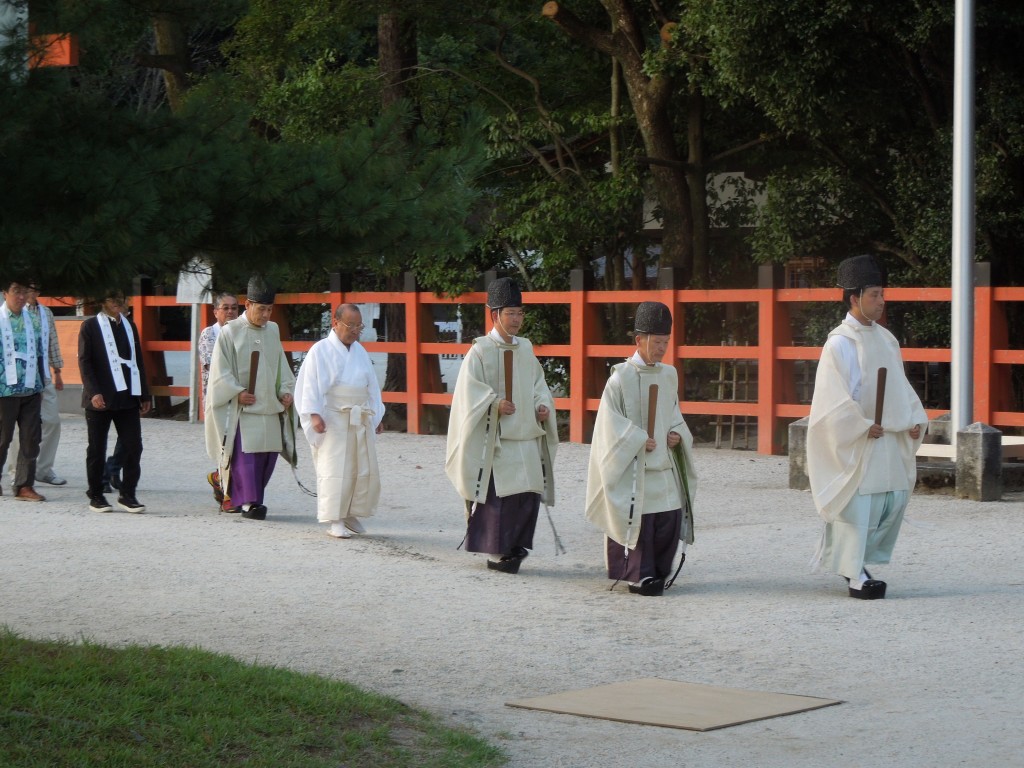
Priests lead a procession of those involved in the ritual of thanks to the kami for the blessings of the autumn full moon
Today it was the turn of Kamigamo Shrine in Kyoto to celebrate the autumn moon, though it’s already visibly waning. It’s a new festival, only started recently, and doesn’t have anything like the full programme and traditional atmosphere of its sister shrine, Shimogamo. Consequently, despite the superb weather, crowds were small and the feeling more like a small village fete. Still it’s always nice to celebrate an equinox.
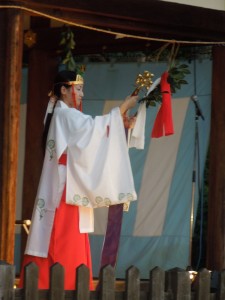
Miko waving sakaki branch over participants while shaking suzu bells
The event started in the afternoon and there were a few items of interest, with a local taiko band, various stalls, and a public rite of thanksgiving for the beauty of the full moon. This took place in the late afternoon while it was still light, and was performed on a stage sideways on to the audience watching.
It’s not often one gets such a clear view of a Shinto ritual, complete with kami-oroshi (descent of the kami) and kami-okuri (sending off of the kami). A running commentary by a priest with a microphone not only explained the names of each part of the ritual, and who was doing what, but made sure the small audience all stood and bowed at the correct time.
A Kansai University professor, friend of one of the priests, came up with the idea of covering a white paper orb with calligraphy of wishes. (See photo below.) His idea was then to generate electricity from a cycle to light it up in the evening as a moonful of hopes for a better world.
I took the opportunity of the great weather to stroll up the hill to the side of the shrine, where there are views over Kyoto towards the eastern hills. There were several small shrines, with a decidedly syncretic feel, which surprised me.
In amongst the shrines to Inari, Ryujin and Konpira, I noticed a dedication to the Buddhist deity Fudo-myo. It seemed quite apt somehow, for moon-viewing is common to both temples and shrines. Indeed, the custom is said to have been introduced from China about 1200 years ago and practiced by Emperor Saga at Daikoku-ji, where one of Kyoto’s most elegant moon-viewing parties is held in the form of boats full of Heian-era musicians floating over the silvery reflections.
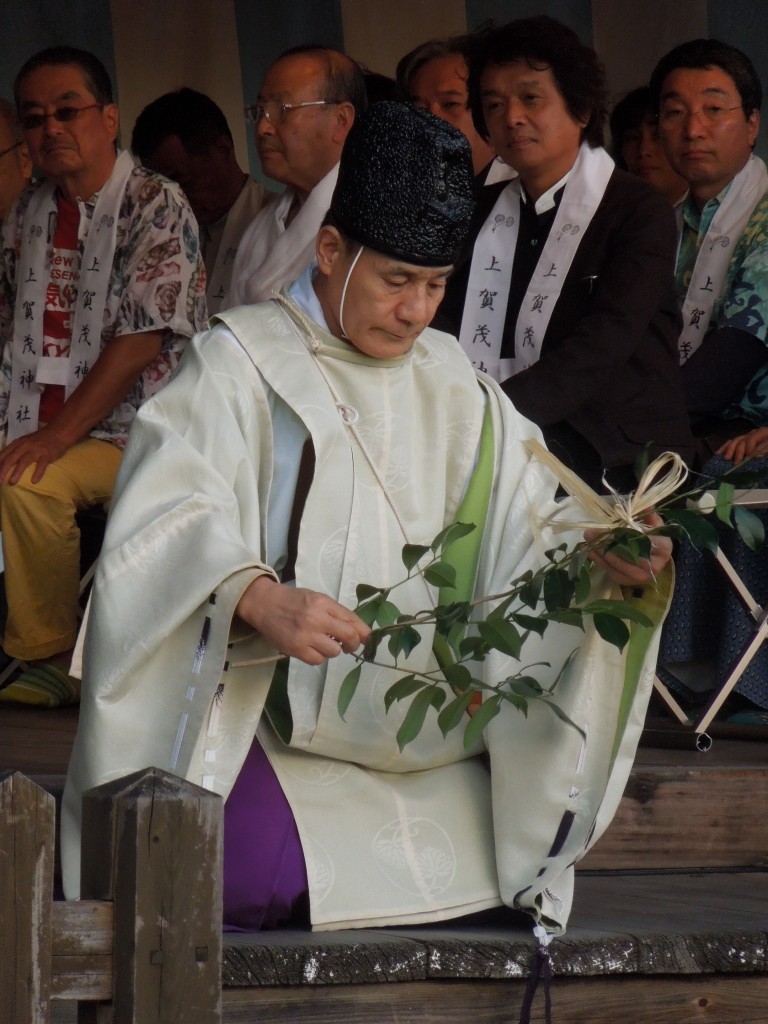
A priest holding the 'purification wand' – a branch of sakaki with some hemp string attached
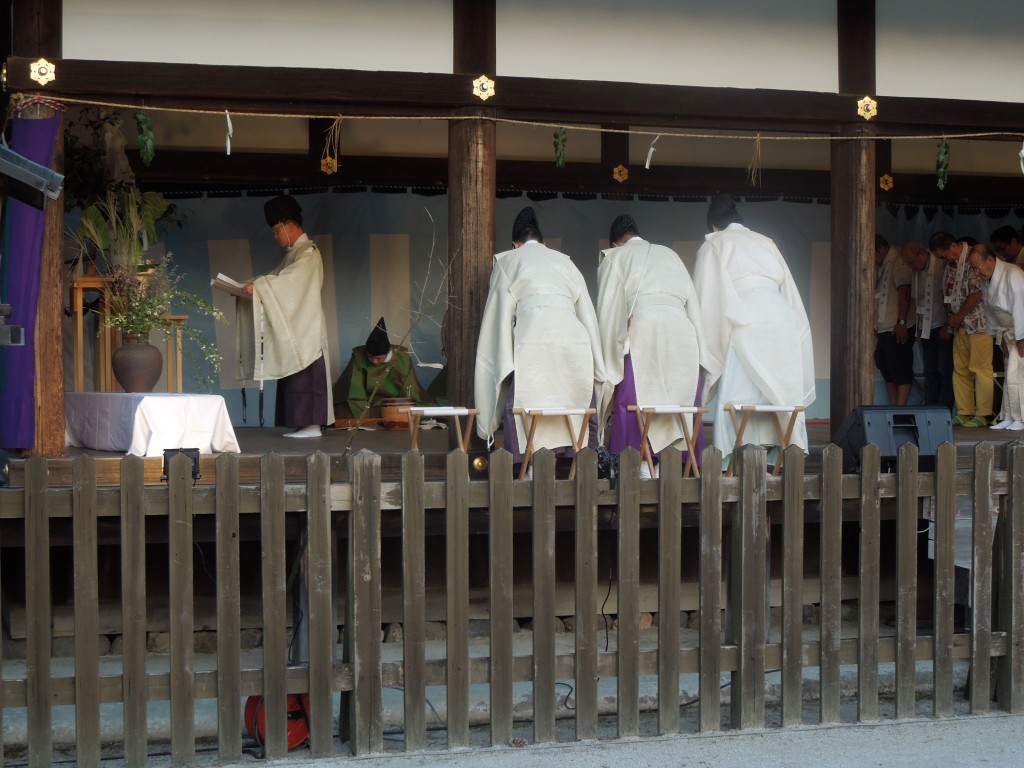
Reading of the Norito praayer before the temporary altar (himorogi)
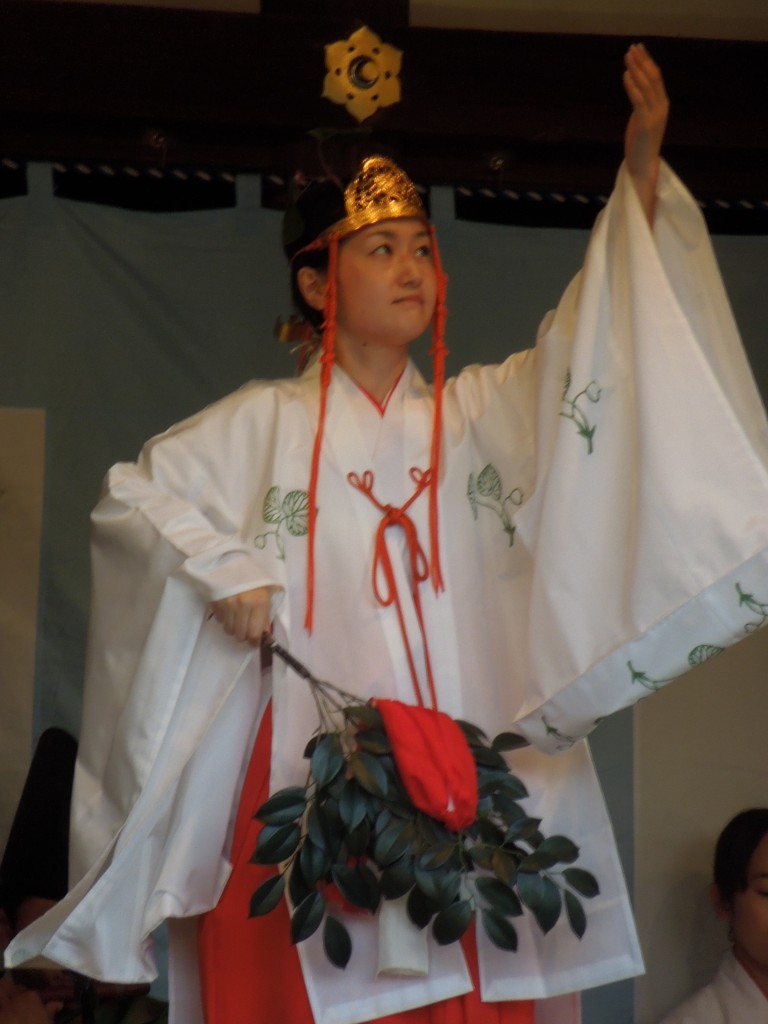
A miko performs an ancient kagura dance
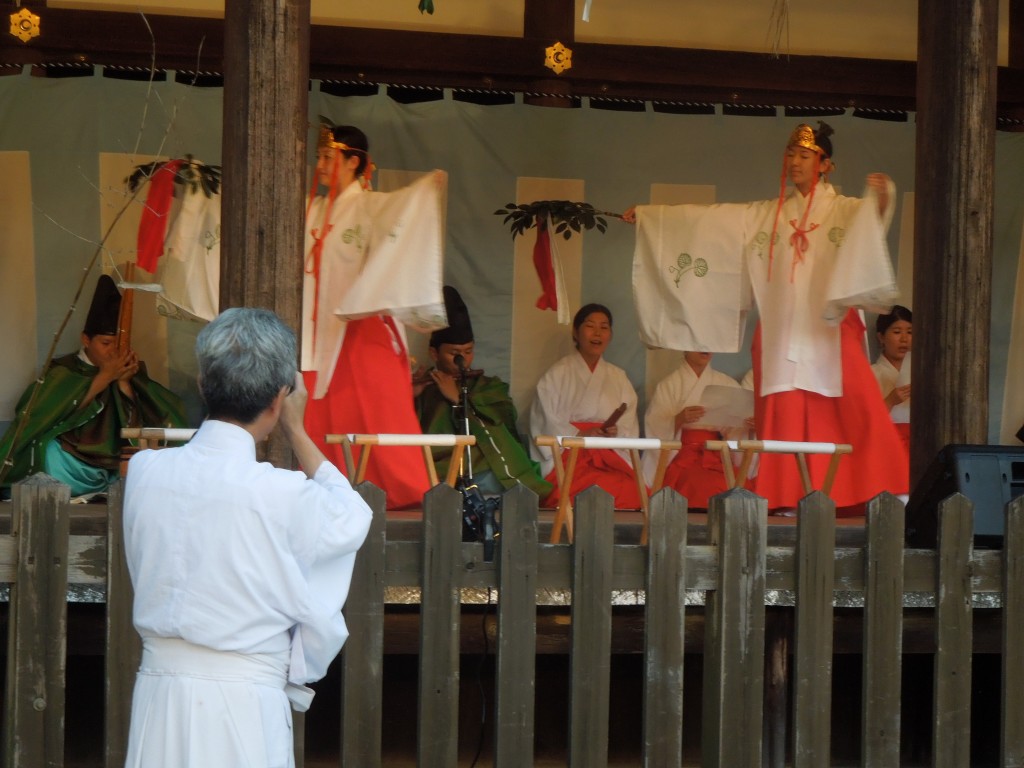
A priest photographs the kagura performance with live gagaku music
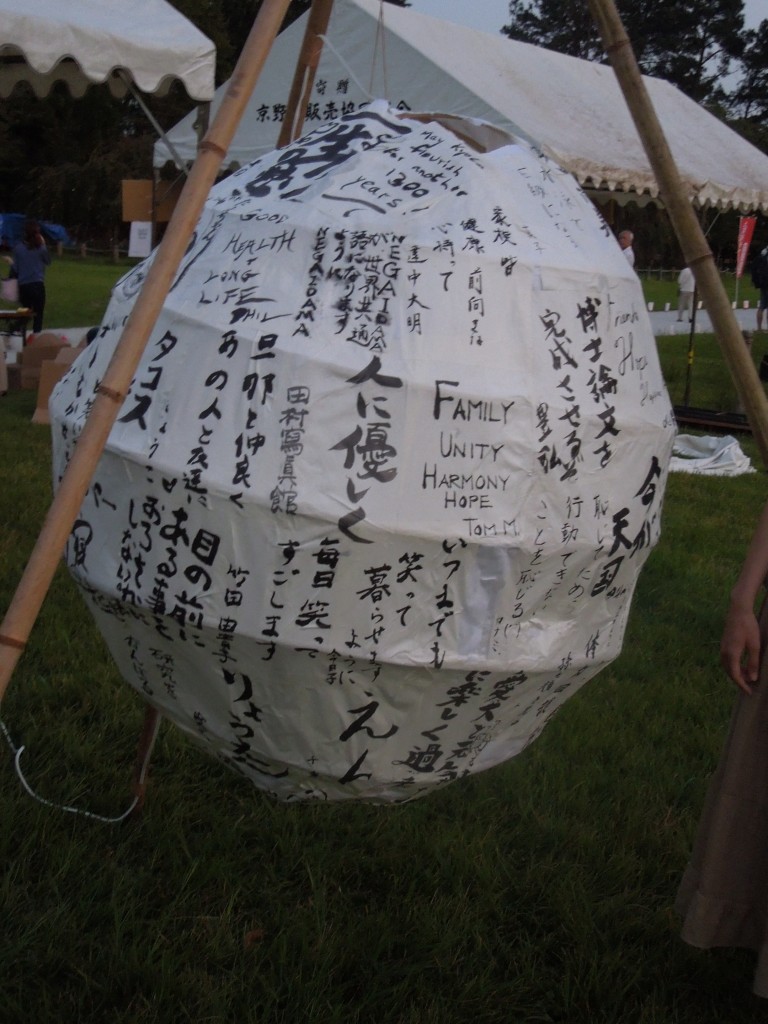
The 'full moon' of people's hopes and wishes

Leave a Reply